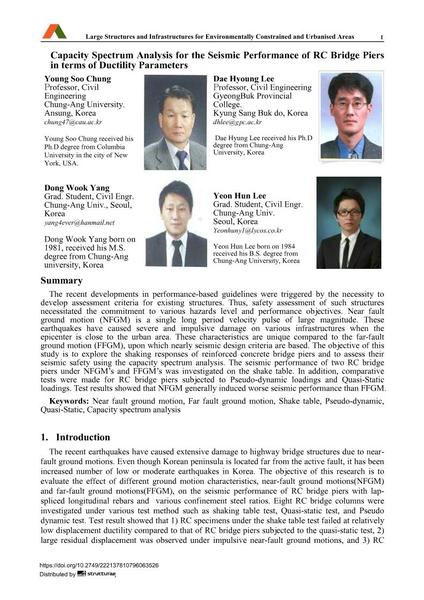Capacity Spectrum Analysis for the Seismic Performance of RC Bridge Piers in terms of Ductility Parameters

|
|
|||||||||||
Bibliographic Details
| Author(s): |
Young Soo Chung
Dae Hyoung Lee Dong Wook Yang Yeon Hun Lee |
||||
|---|---|---|---|---|---|
| Medium: | conference paper | ||||
| Language(s): | English | ||||
| Conference: | IABSE Symposium: Large Structures and Infrastructures for Environmentally Constrained and Urbanised Areas, Venice, Italy, 22-24 September 2010 | ||||
| Published in: | IABSE Symposium Venice 2010 | ||||
|
|||||
| Page(s): | 752-753 | ||||
| Total no. of pages: | 8 | ||||
| Year: | 2010 | ||||
| DOI: | 10.2749/222137810796063526 | ||||
| Abstract: |
The recent developments in performance-based guidelines were triggered by the necessity to develop assessment criteria for existing structures. Thus, safety assessment of such structures necessitated the commitment to various hazards level and performance objectives. Near fault ground motion (NFGM) is a single long period velocity pulse of large magnitude. These earthquakes have caused severe and impulsive damage on various infrastructures when the epicenter is close to the urban area. These characteristics are unique compared to the far-fault ground motion (FFGM), upon which nearly seismic design criteria are based. The objective of this study is to explore the shaking responses of reinforced concrete bridge piers and to assess their seismic safety using the capacity spectrum analysis. The seismic performance of two RC bridge piers under NFGM’s and FFGM’s was investigated on the shake table. In addition, comparative tests were made for RC bridge piers subjected to Pseudo-dynamic loadings and Quasi-Static loadings. Test results showed that NFGM generally induced worse seismic performance than FFGM. |
||||
| Keywords: |
Quasi-static Near fault ground motion Far fault ground motion Shake table Pseudo-dynamic capacity spectrum analysis
|
||||
